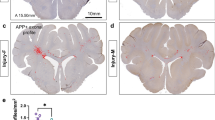Summary.
Background. There is a prominent difference between the responses of young and aged patients to brain injury in the clinical setting, but the exact cause of this condition is not well known.
Methods. Young (3–4 months) and aged (36–40 months) Wistar albino male rats were used as subjects, and they were divided into four groups: young and aged study groups, and young and aged control groups. In all groups, craniectomies were performed over the left hemispheres, and in the study groups, cold injuries were inflicted. Brain tissue sialic acid contents were determined in all groups.
Findings. Brain tissue sialic acid content was higher in aged control rats than young control ones, but the difference was not statistically significant. Tissue sialic acid content was significantly increased in young rats after trauma. On the contrary, it was significantly decreased in aged rats after trauma.
Interpretation. In young rats, brain tissue sialic acid content was significantly increased 24 hours after cold injury unlike in the aged ones. This may be a finding related to decreased regeneration capability of aged brain.
Similar content being viewed by others
Author information
Authors and Affiliations
Rights and permissions
About this article
Cite this article
Uslu, E., Güzey, F., Oguz, E. et al. The effects of ageing on brain tissue sialic acid contents following cold trauma. Acta Neurochir 146, 1337–1340 (2004). https://doi.org/10.1007/s00701-004-0360-y
Received:
Accepted:
Published:
Issue Date:
DOI: https://doi.org/10.1007/s00701-004-0360-y




